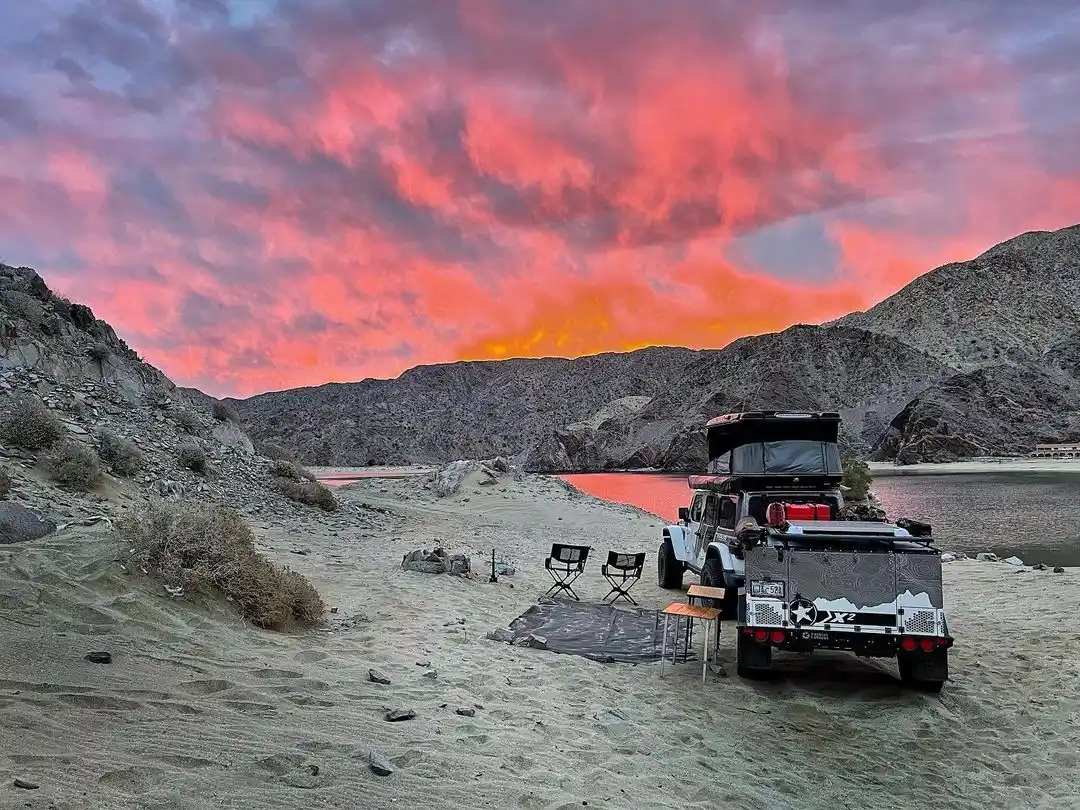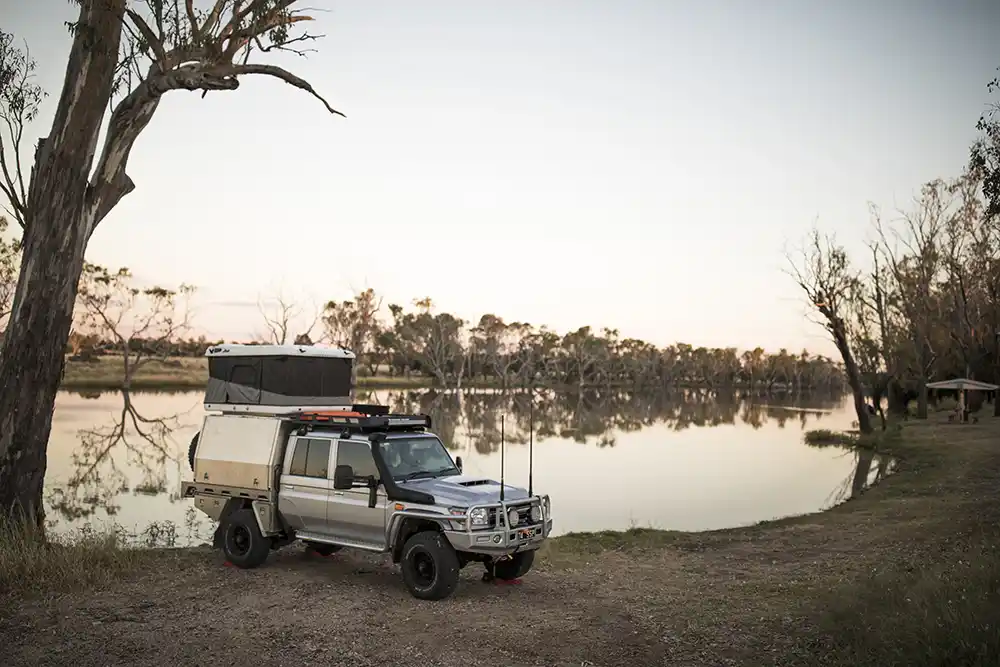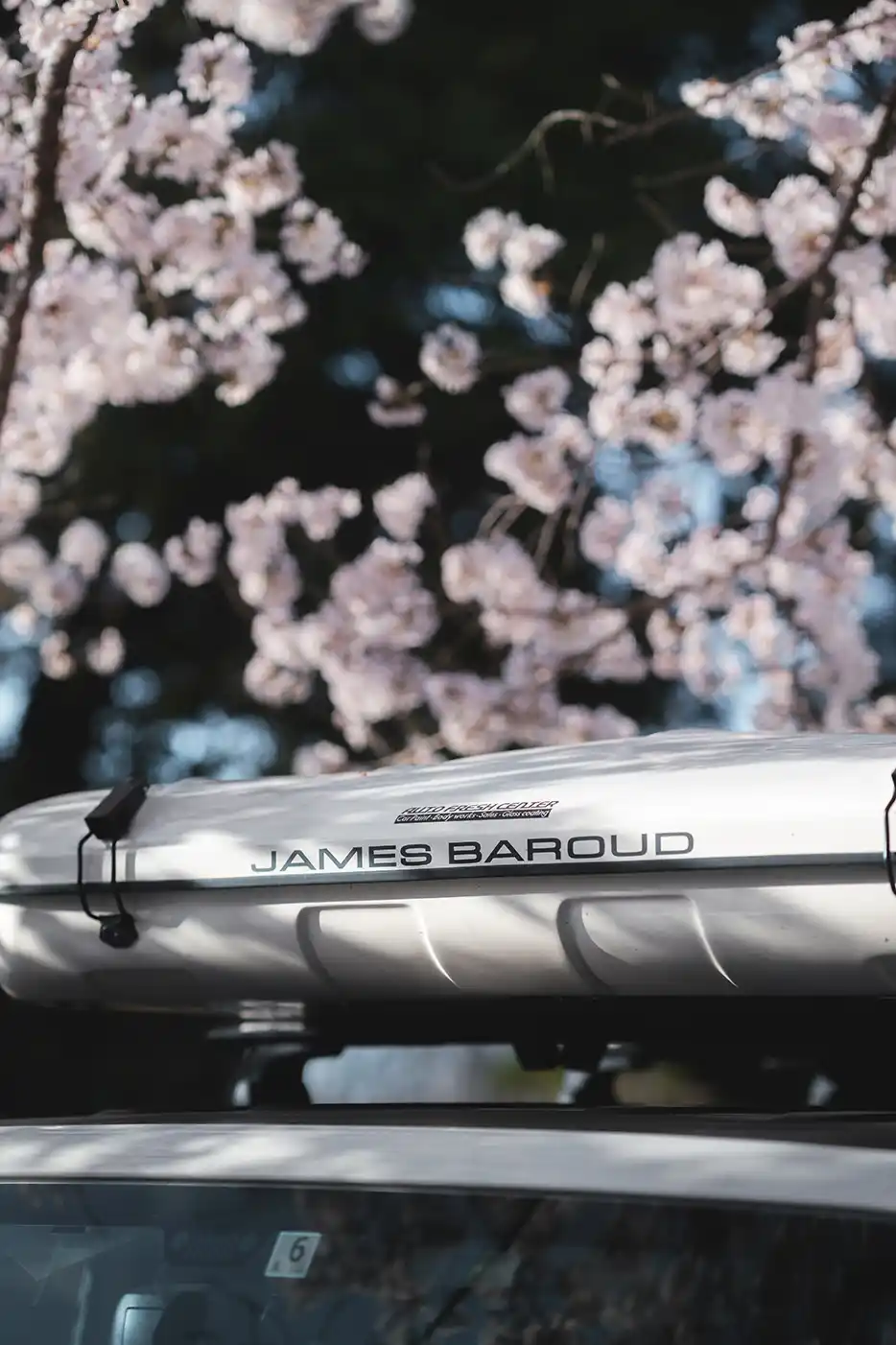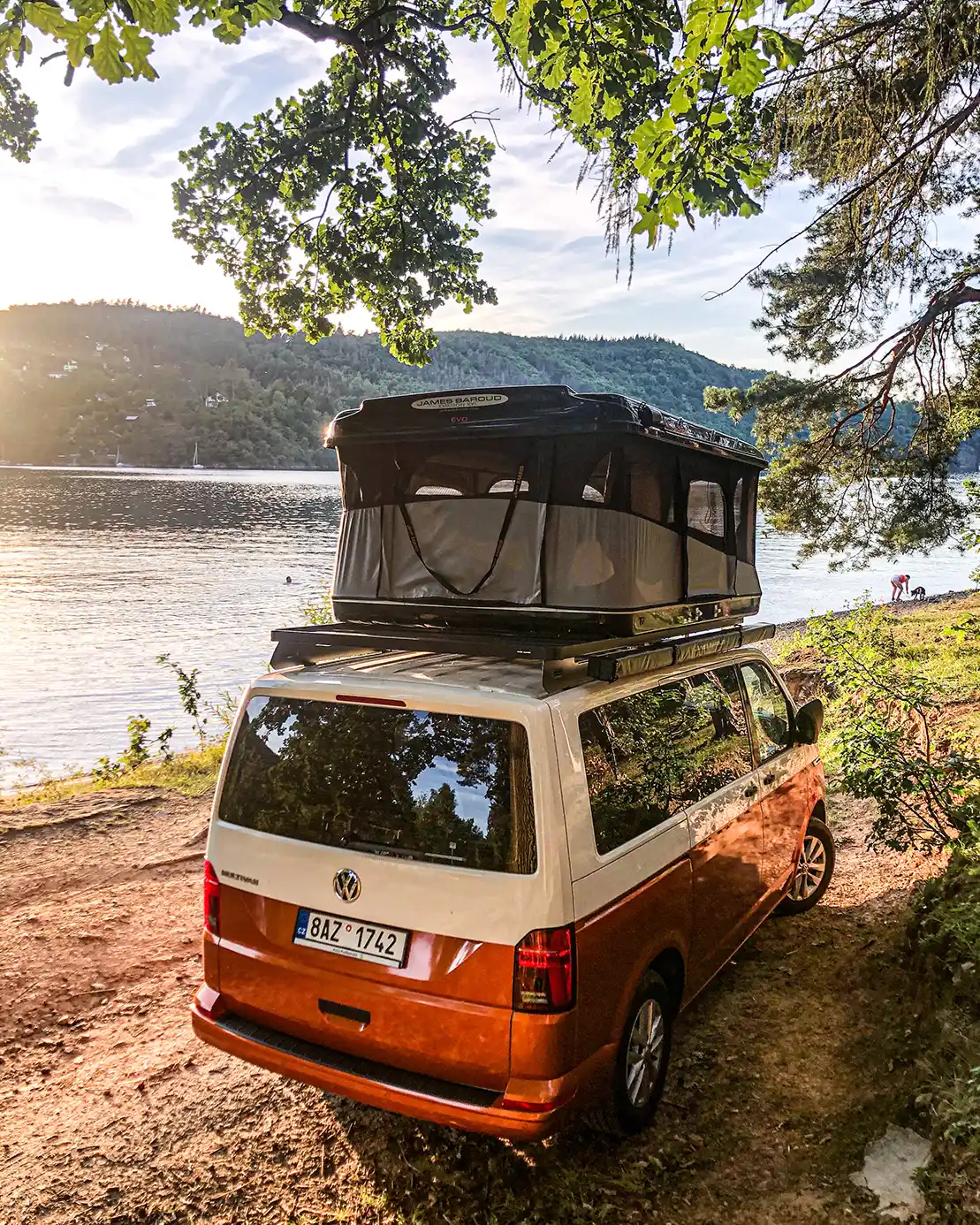
Tread Lightly: A guide to responsible overlanding
15 Oct, 2024
Overlanding, by its very nature, is about venturing into the wild, embracing remote travel, and immersing oneself in the beauty of nature. As the popularity of overlanding and rooftop tents continues to rise, so too does the responsibility that we, as adventurers, carry to protect these pristine environments for future generations. One of the most important philosophies to adopt when overlanding is Tread Lightly—a set of principles that guide outdoor enthusiasts to minimize their impact on the land.
Whether you’re traversing rugged backcountry trails or setting up camp in an untouched wilderness, practicing Tread Lightly ensures that we enjoy the outdoors in a way that keeps it sustainable and accessible. Here’s how to incorporate these principles into your overlanding adventures.
Travel Responsibly: Protect the landscapes you explore
Traveling responsibly is one of the fundamental principles of Tread Lightly in overlanding. When we venture into remote and often fragile landscapes with our vehicles, every action we take impacts the environment. While the vehicle is essential for exploring these areas, it can also be one of the biggest sources of damage if not used consciously. Here’s an in-depth look at how to reduce your environmental footprint by following this principle:
Stay on designated roads and trails
One of the most common mistakes overland drivers make is veering off established roads or trails. While the temptation to explore new routes or uncharted terrain can be strong, this type of practice can cause irreparable damage. The consequences of leaving marked paths are numerous:

Damage to vegetation: Many ecosystems are extremely sensitive. Vegetation, especially in desert areas, mountainous regions, or high altitudes, can take years, even decades, to recover from the destruction caused by vehicle traffic. Soil compaction can prevent plants from growing again, disrupting the area’s ecological balance.
Disruption of wildlife: Vehicles leaving designated paths can invade wildlife habitats, causing stress to local species, forcing them to move from their natural areas, or even destroying their breeding or feeding grounds.
Accelerated erosion: Straying off the path can destabilize the soil, particularly in steep or vulnerable areas, leading to increased erosion. This not only affects the flora and fauna but also damages the trails themselves, making them impassable over time.
To avoid these problems, it’s essential to always respect the designated roads and routes for vehicles. Established trails are designed with sustainability and conservation in mind, so following them helps minimize the impact of our presence.
Respect seasonal closures
Many roads and trails are subject to seasonal closures to protect them during critical periods, such as winter or rainy seasons. Driving on a closed trail not only risks damaging your vehicle but also contributes to the degradation of the terrain. The most common reasons for these closures include:
Protecting soft ground: In wet seasons, roads and trails can become muddy or unstable. The weight of vehicles can create deep ruts in the ground, which may channel water and accelerate erosion. In some cases, the damage can be so severe that certain routes have to be permanently closed.

Conserving habitats: Some areas are closed during certain times of the year to protect sensitive habitats, such as bird nesting areas or wildlife migration corridors. Driving through these areas during closures can disturb local wildlife and endanger vulnerable species.
Before setting out on a trip, it’s crucial to stay informed about seasonal closures and current road conditions. Many national parks, nature reserves, or public lands provide frequent updates on the status of their trails and routes.
Drive smoothly and avoid spinning tires
How you drive your vehicle can have a significant impact on the terrain. To minimize damage:
Control your throttle: Abrupt acceleration can cause tires to spin, especially on loose or wet terrain. This movement wears down the trail surface and contributes to erosion. Use lower gears and control the throttle to maintain smooth and steady movement.
Avoid creating new paths: Sometimes trails may have obstacles such as rocks, fallen trees, or difficult sections to traverse. The solution is not to go around the obstacle by creating a new path but to try to overcome it with proper driving techniques or, if necessary, turn back. Creating alternative paths or “shortcuts” destroys the soil and can lead to the uncontrolled expansion of unofficial routes.
Recover responsibly: If your vehicle gets stuck in mud, snow, or sand, it’s important to recover it in a way that causes the least damage to the terrain. Use proper recovery techniques, such as winches, traction boards, or high-lift jacks, rather than just applying more throttle, which could deepen ruts and cause more erosion.
Carry the right equipment
To travel responsibly, it’s essential to be prepared with the right gear:
Off-road or all-terrain tires are a must. They not only provide better traction on difficult terrain but are also designed to cause less damage to the ground.
Also as mentioned earlier, it’s important to carry recovery tools like winches, traction boards, and tow straps so that, in case of a stuck vehicle, you can get it out without worsening the condition of the terrain.
Respect the rights of others
One of the joys of overlanding is the shared sense of community among fellow adventurers, but it’s important to extend respect to other land users:
Be courteous to hikers, cyclists, equestrians, and other outdoor enthusiasts. Yield appropriately and give them space to enjoy the wilderness too.

Limit noise pollution by keeping your engines and radios at a respectful volume, especially around campsites where others may be seeking solitude.
Respect private property by always adhering to “no trespassing” signs and asking for permission if you plan to access land that is privately owned.
Educate yourself
Preparation is key in responsible overlanding, and that begins with knowing the area you’ll be exploring:
Familiarize yourself with local regulations. Different regions have specific rules about camping, fire safety, and vehicle restrictions. Stay informed to avoid unintentional harm to the environment.
Plan for emergencies. Know the local terrain, have navigation tools, and ensure you’re equipped with the right gear for vehicle recovery. By being prepared, you avoid creating unnecessary damage to the land if you find yourself in a tricky situation.
Avoid sensitive areas: Protect fragile ecosystems
Overlanding often takes us through some of the most remote and pristine environments, many of which are highly sensitive to human presence. These areas, if disturbed, can take years or even decades to recover, if they recover at all. It is our responsibility as overlanders to recognize and respect these fragile regions by minimizing our impact. Here’s a deeper look at how to protect sensitive areas during your overlanding adventures:
Avoid wildlife habitats
One of the key principles of overlanding responsibly is respecting the natural inhabitants of the places we explore. Many areas, especially remote ones, serve as critical habitats for wildlife, including endangered or vulnerable species. It’s crucial to steer clear of wildlife habitats and ensure we don’t disrupt the animals that call these areas home.
Give wildlife space: Animals, particularly those in protected areas, rely on specific habitats for feeding, nesting, and raising their young. Approaching too closely or making excessive noise can cause undue stress, disrupt natural behaviors, or even drive animals away from their essential habitats. For example, certain bird species may abandon their nests if they feel threatened by human presence, leading to the death of their offspring.
Know the local wildlife: Before setting out on your overlanding trip, it’s important to learn about the species in the area. Be aware of migratory routes, mating seasons, and nesting periods. Avoid setting up camp or driving through these areas during critical times. For instance, some areas may have seasonal restrictions to protect breeding grounds for animals such as elk, deer, or endangered birds. Respect these restrictions to ensure the wildlife is not disturbed.
Respect wildlife corridors: In many regions, animals rely on migration corridors—pathways they use to move between feeding and breeding areas. Overlanders should avoid blocking or disrupting these routes, especially during migration seasons. Additionally, always maintain a respectful distance from wildlife and never approach or feed them, as this can lead to dangerous human-animal interactions.
Stay away from wetlands, alpine meadows, and riparian zones
Wetlands, alpine meadows, and riparian zones (areas adjacent to rivers, lakes, and streams) are some of the most sensitive environments you may encounter on an overlanding trip. These areas are crucial for maintaining biodiversity, water quality, and overall ecosystem health, but they are extremely fragile and can be easily damaged by human activity.
Wetlands: Wetlands act as natural water filters and are home to a wide range of plant and animal species. Driving through wetlands can destroy this delicate ecosystem by compacting the soil, disrupting water flow, and destroying vegetation that helps regulate the water table. Vehicle tracks in wetlands can remain visible for years, and the damage caused by driving through these areas can lead to the drying out of the wetland or the introduction of invasive species.

Alpine meadows: These high-altitude grasslands are particularly vulnerable because the growing season is short, and the plants are often shallow-rooted. Driving or camping in alpine meadows can crush fragile plants, leading to erosion and the loss of the delicate plant cover that helps prevent landslides and stabilize the soil. Avoid venturing into these areas and stick to established trails when exploring higher altitudes.
Riparian zones: These are the green strips of vegetation found along the edges of rivers, lakes, and streams. They play a vital role in preventing erosion, maintaining water quality, and providing habitat for both aquatic and terrestrial species. Vehicle traffic in riparian zones can lead to bank collapse, siltation of waterways, and destruction of plant life, which harms fish populations and degrades the overall health of the ecosystem. When camping or traveling near water, always stay at least 200 feet away from the water’s edge to prevent erosion and contamination.
Use established campsites
One of the best ways to protect sensitive areas is by using established campsites whenever possible. These campsites are designed to concentrate human activity in specific areas that are already hardened to the impact of camping, which prevents the spread of damage to new, undisturbed areas.
Minimize your footprint: Established campsites often have designated fire rings, clear parking areas, and flat surfaces for tents or rooftop tents. By using these, you prevent the need to create new fire rings or clear vegetation for camping, which would disturb the surrounding environment. If you’re in an area where no designated campsites exist, follow the principle of dispersing your camp. This means spreading out your camping gear to avoid overusing any one spot and preventing the creation of a permanent campsite in a fragile area.

Camp on durable surfaces: If you must camp outside of established areas, set up camp on durable surfaces like rock, gravel, or sand. These surfaces are more resistant to damage than soft soils or vegetation, and they recover faster. Avoid setting up camp in meadows, near water sources, or in areas with significant plant life, as these ecosystems are slow to regenerate.
Respect fire restrictions: In many sensitive areas, especially in dry regions or during fire season, campfires may be prohibited. Always follow local fire regulations, and when fires are allowed, use existing fire rings or bring your own portable fire pit. Never build a new fire ring in a sensitive area, as the heat can destroy plant life and leave permanent scars on the landscape.
Do your part
Perhaps the most actionable Tread Lightly principle is to leave the areas you visit better than you found them:
Pack out all trash, including micro-waste such as food scraps, wrappers, and bottle caps. Bring along extra trash bags to pick up any litter left by less conscientious visitors.
Minimize campfire impact by using a camp stove instead of a fire. If you must have a fire, use an existing fire ring and make sure it is completely extinguished before you leave.
Disperse your waste: For human waste, dig a cathole at least 6 inches deep and 200 feet away from water sources, and cover it properly when done. Carry out used toilet paper if the environment requires it.
Avoid washing directly in water sources. Use biodegradable soap and wash dishes and yourself at least 200 feet away from rivers, lakes, or streams.
Rooftop tents: Tread lightly while camping
Rooftop tents have become a favorite among overlanders due to their convenience, comfort, and minimal impact on the environment. Still, there are best practices to keep in mind:
Choose durable campsites: When setting up your rooftop tent, try to park on durable surfaces like gravel, sand, or bare soil. Avoid fragile areas where tire marks or camp activity could cause damage.

Leave no trace when camping: Always ensure you pack out all waste and leave your campsite in the same condition (or better) than when you arrived. Rooftop tents help minimize ground disturbance, but it’s still essential to maintain responsible camping practices.
Protect the vegetation: Avoid setting up in areas with thick vegetation that could be trampled underfoot or by vehicle movement. This is especially important in delicate ecosystems like deserts or high-altitude areas where plant life takes years to recover.
Final thoughts
Overlanding allows us to explore some of the most remote and awe-inspiring places on Earth. However, with this privilege comes the responsibility to protect these environments. By embracing the Tread Lightly principles, we ensure that the wild places we love remain untouched for future generations of adventurers.
Whether you’re driving on backcountry roads, setting up camp in your rooftop tent, or simply enjoying a serene sunset in the wilderness, every action counts. Responsible overlanding not only preserves the land but also enhances the experience for everyone. So, let’s continue to tread lightly, leaving tire tracks and taking only memories.
Ready to enhance your overlanding adventures while treading lightly on the environment?
Check out our rooftop tents that combine comfort, durability, and eco-friendly design. Your perfect companion for your next journey!
